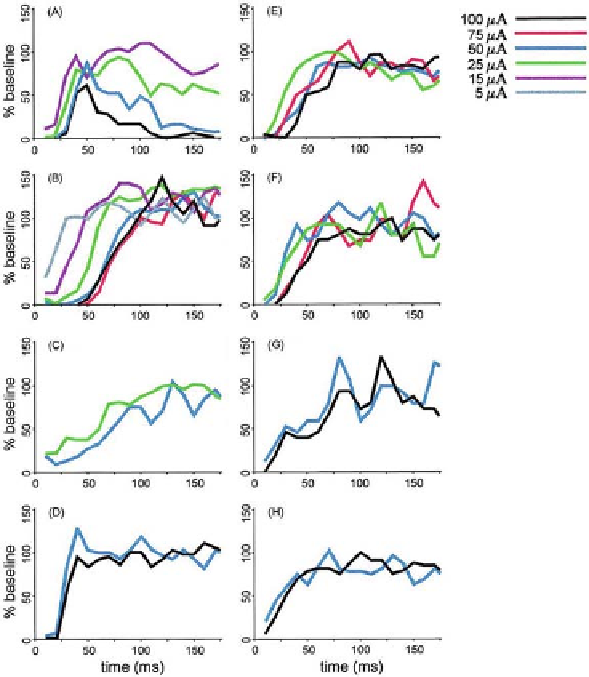Information Technology Reference
In-Depth Information
Fig. 13.7: Spike-rate in 10 ms bins, smoothed with a 20 ms sliding window, as per-
centage of baseline (no stimulus) and a function of time (stimulus at time 0) as
observed experimentally and reported by Dostrovsky et al. [36]. A period of qui-
escence or inhibition can be seen immediately following a stimulus. Then, normal
neural firing rates gradually resume.
influenced by neural activity cause the modification of synapses, thus strengthening
or weakening the influence of one neuron on the behavior of another [140].
Increasing the pulse width is avoided due to the recruitment of and possible dam-
age to adjacent brain centers and the resulting side effects such as dysarthria (a
speech disorder) and ataxia (loss of movement coordination) [152, 99, 100]. For ex-
ample, Fig. 13.8 shows curves of the minimum pulse width-amplitude combinations
that cause tremor suppression and onset of adverse side effects as found through ex-
perimentation on human subjects. Moreover, this is a verification of the response of
the theoretical lumped parameter model shown previously in Fig. 13.1.
In DBS, bipolar stimulation is avoided due to the higher power dissipation that
it requires. Only if side effects persist, the bipolar mode turned on because of the

